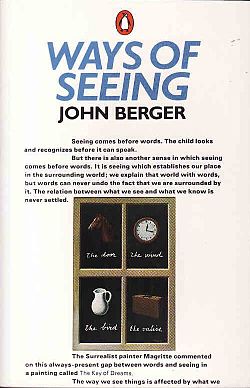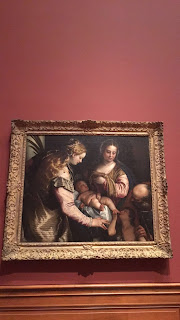The artwork I’ve
created is an attempt at modernizing the work of Paolo Veronese. When thinking
of what to create, I followed his less manneristic approach using bright, vivid
colors, which he later used throughout his career. I also deemed it as appropriate
to incorporate a social trend that occurs within the 21st century.
The Protestant Reformation and Inquisition were social trends which inspired
Veronese’s artwork. Both of these historical events influenced a movement from
heresy within the Roman Catholic church. Although Veronese was Catholic, his
most famous piece which reflects the Protestant Reformation was his rendition
of the Last Supper. This less than biblical depiction became banned from the
church because of his incorporation of German soldiers, drunks, cats and a minimal
focus on Christ. Imagining Veronese in the 21st century, I used
bright paint colors to paint a church characterized by the gay flag. I also
created a modern rendition of Adam and Eve in the Garden of Eden which depicts
two men as the first couple on earth. Both of my artworks depict a modern rendition
of how society has testified the classical beliefs of the bible. As seen by
Veronese’s rebellious reputation, I feel these are an accurate postmodern
attempt at depicting this. For the painting of the church, I chose to use paint
as my medium because that was Veronese’s most used technique. The work’s focal
point is the church surrounded by a background of blue. The connotative or
implied meaning of the piece communicates a modernistic approach at religion. It
is implied by the gay flag that I am either promoting or mocking the views of
today’s church. For my Adam and Eve rendition, I chose both paint and the use
of collage and Photoshop as my medium. I felt this was successful in attempting
Veronese’s less focused approach on the religious aspect of the image and diluting
it with color. Both “Adam’s” are the focal point, however, they are less
centralized in the image and made smaller than their surroundings, just as
Christ was created small in Veronese’s “Feast in the House of Eli.” The connotative
meaning of the piece communicates a biblical piece whereas after a closer look,
the denotative meaning becomes clear that this could also be a mockery of
religion and modern times.
Reflecting on
this past semester, I’m grateful for the respect I’ve acquired for art in general.
It was interesting to learn the makeup of a visual analysis and all the little
pieces that go into a work of art. Starting with the BMA, simply choosing a
piece that stands out to me, I’ve self-taught myself on Paolo Veronese, the
Renaissance and was taught about many different artists and styles from my
classmates. Walking away from this class, I can say that I will now look closer
at any given piece of art. Whether it be detecting if it’s a rule of thirds, or
just being able to identify its color scheme, I now feel I’m capable to pick
the brain of an artist and attempt to define their thought process. The only
opportunity I see for this class to be better would be providing a more
in-depth Photoshop tutorial for students such as I that have no background in
it. This was the only difficulty I had when it came to the advertisement
project which required skill in Photoshop.







